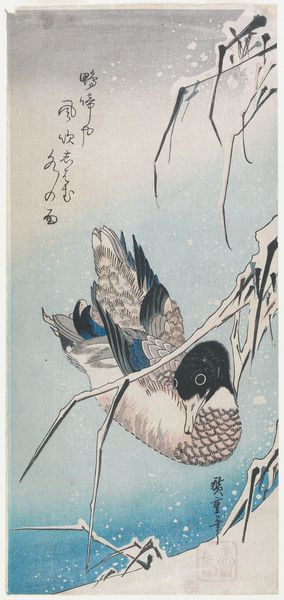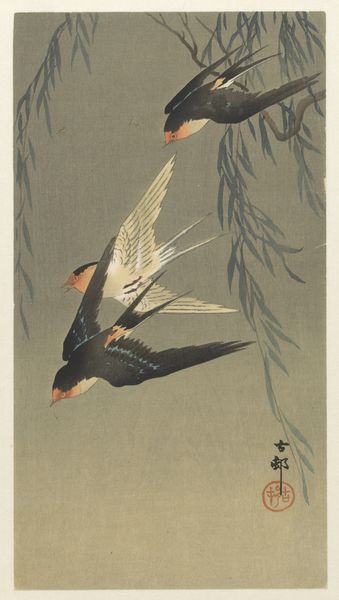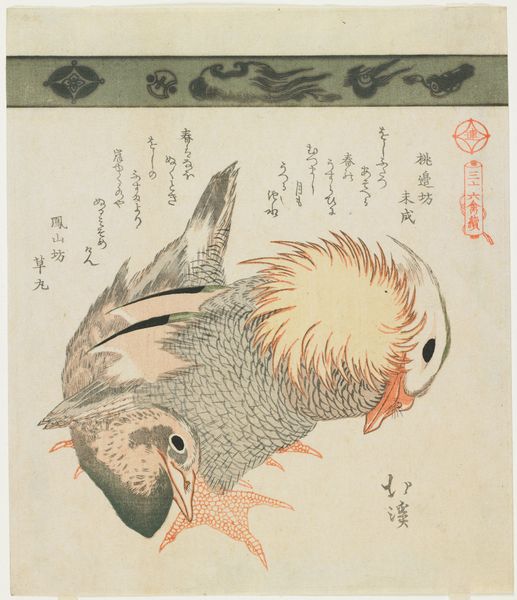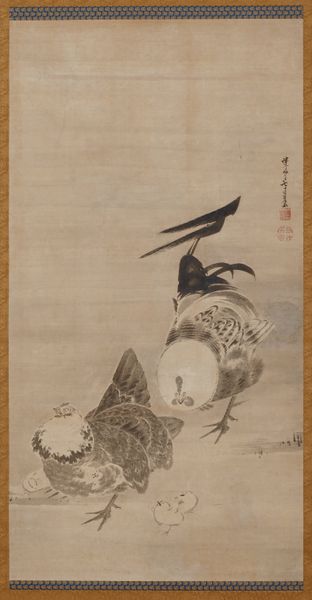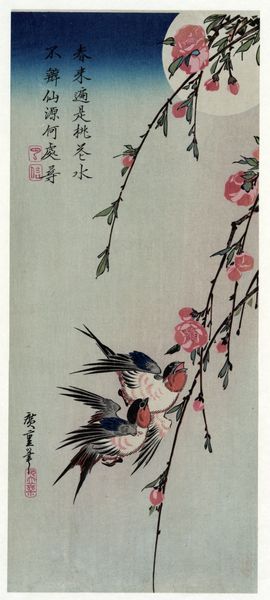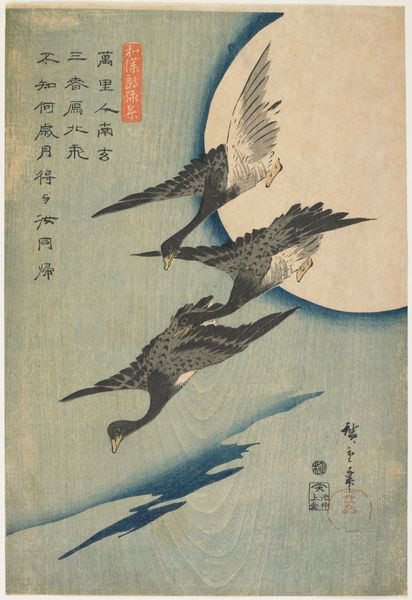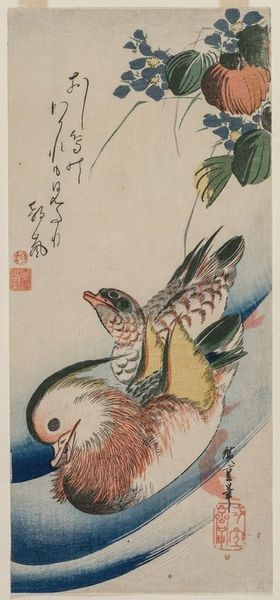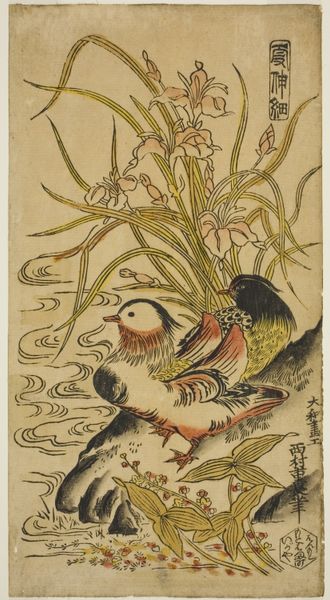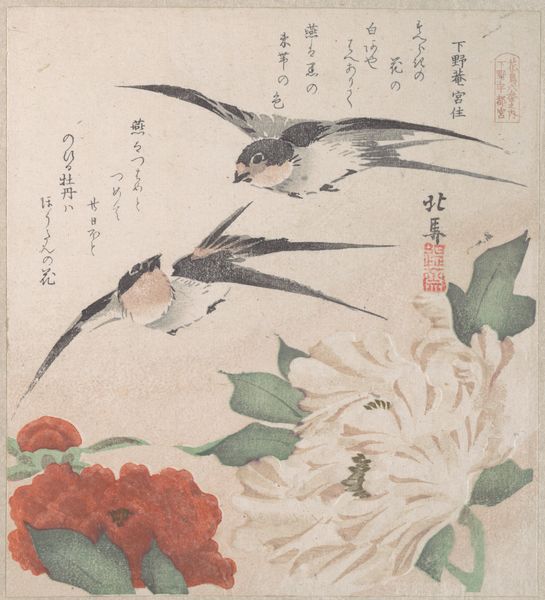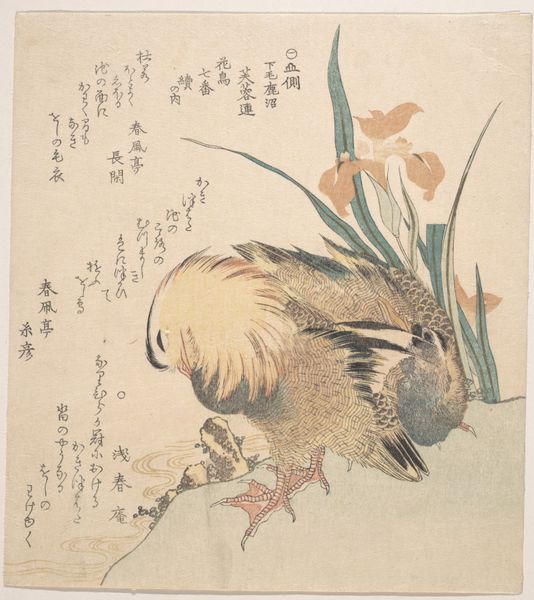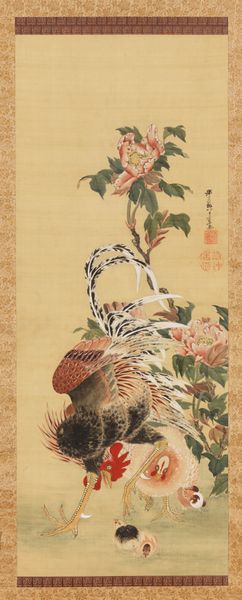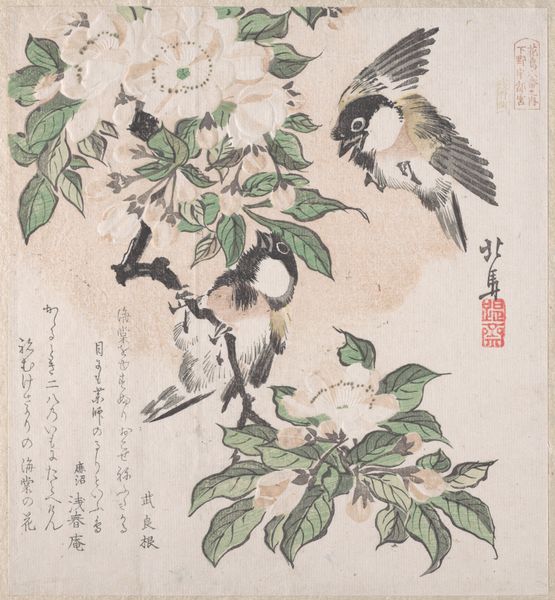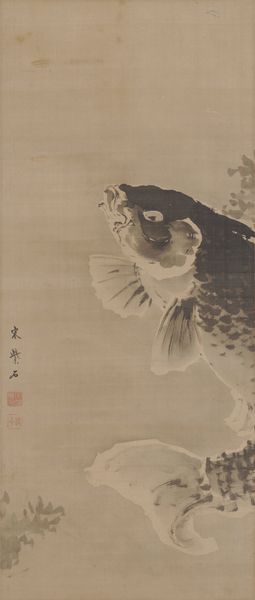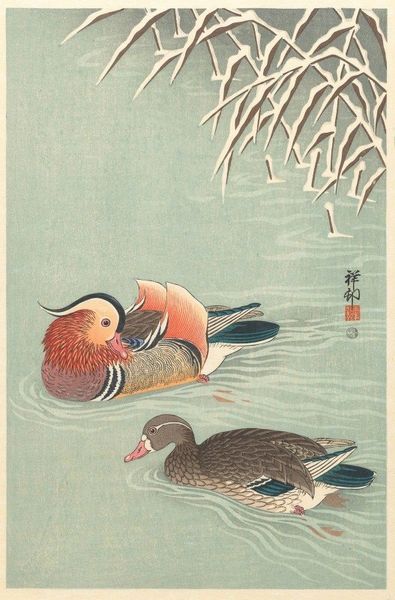
Two Mandarin Ducks 1838
0:00
0:00
utagawa_hiroshige
Whitworth Art Gallery (University of Manchester), Manchester, UK
Copyright: Public domain
This woodblock print by Utagawa Hiroshige presents two mandarin ducks, emblems of marital fidelity and love within the rich tapestry of Japanese symbolism. The presence of these ducks, peacefully paired, floats upon more than just water; it sails upon a sea of cultural memory. Consider the enduring motif of paired birds across cultures – doves in Rome, swans in Germany. These symbols transcend mere representation, they are vessels carrying collective emotions and societal ideals related to love, devotion, and harmony. Yet, the mandarin duck holds a unique resonance in East Asian art. It represents not only conjugal bliss but also the ephemeral beauty of nature, a concept deeply rooted in Zen Buddhism. Its vibrant plumage, carefully rendered by Hiroshige, engages us on a visceral level. The image evokes a powerful sense of longing for an idealized vision of partnership, reflecting a universal human desire. The mandarin duck continues its journey through time, resurfacing in modern art and design.
Comments
No comments
Be the first to comment and join the conversation on the ultimate creative platform.
